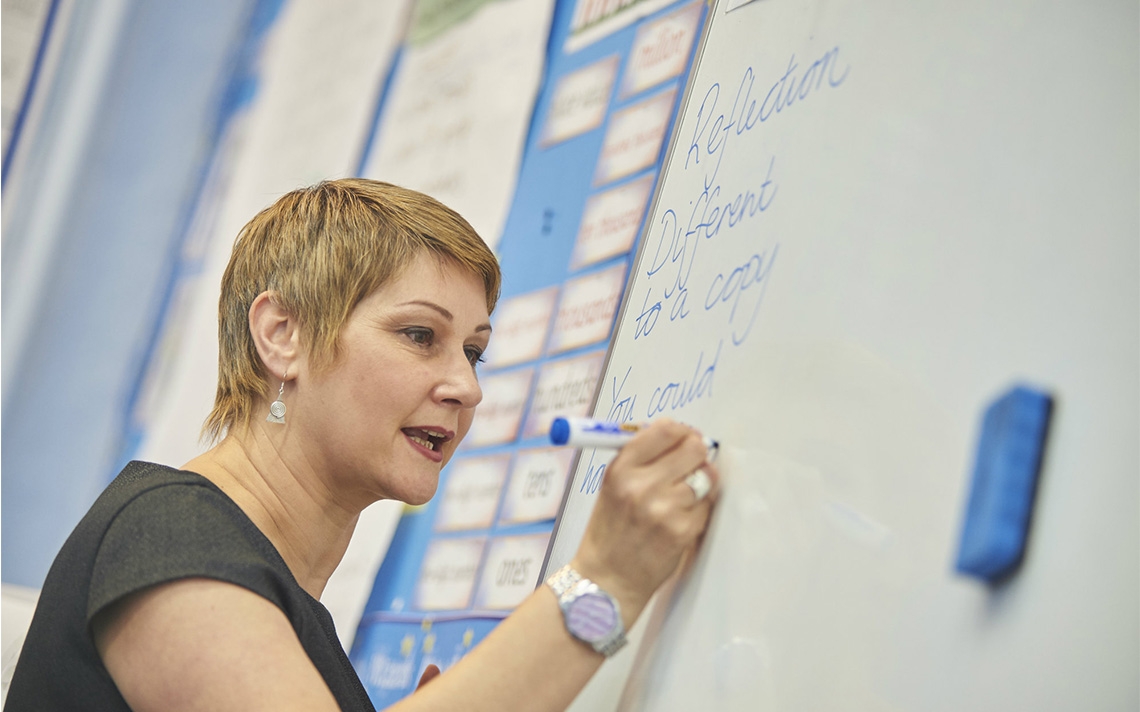Avoiding common pitfalls of a scheme of work and ensuring pupil progress
What is a scheme of work (SOW) useful for and how can teachers make it work best within their own classroom context? Suzanne Terrasse, former head of department, languages consultant and advisor to the exam boards, examines best practice and how to avoid common pitfalls in a scheme of work.
Informs planning
For many teachers, the scheme of work is the plan to be adhered to at all costs! A high-quality SOW will, of course, support planning and an expertly-designed one will:
- 1. give classroom teachers ample direction, building slowly on prior learning and giving teachers ‘permission’ to slow down; and
- 2. support teachers’ well-being by saving precious time with an expert framework, which allows teachers to concentrate on how, not what, to teach.
However, the real beauty of an expertly-designed scheme of work is that it ensures deep learning can take place in the classroom using a range of learning strategies, which have already been thought through by subject specialists and built into the curriculum. This might be, for instance, the Concrete, Pictorial, Abstract (CPA) approach where pupils are lead from an exploration of concrete materials, through pictorial representations and finally are able to understand and express their ideas using abstract conventions; or indeed, the Spiral Curriculum, where topics are covered, left and then returned to in a specific order with the aim of learning being firmly and deeply established.
Both strategies described above demand that the classroom teacher is aware of, and constantly responding to, the needs of the learners in their classroom. A SOW should free teachers to do this, not put them under more pressure to cover the curriculum.
Pitfall 1
The scheme of work is the only plan and the teacher does not deviate from this plan.
The scheme of work should not in itself be the plan; there should not be a slavish following of the scheme to arrive at a certain point by a certain moment. Pupils’ needs should dictate the pace of learning and this may mean that one class is half a topic ahead of another parallel class at the end of half a term.
Assists pace
Pace can be developed through using a scheme of work both as teachers move confidently from lesson to lesson (short term planning) and gain a sense of where they are leading a class in their mid- to long-term planning.
A confident teacher, empowered by a good SOW, will be able to direct class learning without feeling a need to rush. A more experienced practitioner will be able to combine or merge lessons on a topic as required, having assessed that their own classroom context will support that.
A less experienced practitioner will gain confidence from observing their class progress as they follow the SOW from lesson to lesson, using extension materials and support strategies where relevant, and will gain the skills they need to develop better teaching strategies. In this way, they will become increasingly able to assess the needs of all pupils in their class and cater appropriately for them.
Transform Your Maths Assessment
Insights — our online assessment tool — gives you instant, powerful data to identify gaps and improve results.

Pitfall 2
Adhering to a scheme of work that does not take into account the needs of all pupils.
The danger of blind adherence to a scheme of work, no matter how well written, that does not take the response of pupils into account, is that it can lead to a teacher moving on before the class is ready and deep learning and understanding has been embedded.
To paraphrase Tony Gardiner, a British mathematician who until recently held the position of Reader in Mathematics and Mathematics Education at the University of Birmingham: ‘If you want to build high, you better first dig deep!’ Make sure that the foundations are secure before you start to build on them.

Pitfall 3
The temptation to �‘mix it up a bit’.
So, after a couple of lessons on numbers 1 to 10, the teacher, fearing the class might be bored, (or feeling like a change themself) decides to ‘throw in’ some geometry. The danger here is that a teacher can move onto concepts too early, introducing concepts that pupils do not have the proper foundations for yet. Using a well thought through SOW should avoid the temptation to move too quickly to new content. Don’t be afraid to slow down, and remember that the order is relevant. It has been designed by experts with pupil progress in mind!
Enables progress
Finally, a good scheme of work, properly used, will enable progress. What is our measure of progress? For many schools, this will be achieving the completion of the SOW by the end of the school year. This might well feel like ‘job done’ but does it allow all pupils to achieve their full potential?
Government policy in recent decades has tended to focus on the personalisation of learning.
Many teachers falter when asked to achieve this within a whole-class context. A SOW can help develop learning routines, which enable deep learning to take place and foster problem-solving skills in all pupils. This enables the most advanced learners to achieve mastery while still supporting those struggling.
Pupils’ progress is often measured by their performance in internal and/or external assessments. Teachers are also often assessed by the amount of ‘Value Added’ they have achieved for their pupils. Important though this is, it would be an interesting experiment to make our measure of successful assessment, a pupil’s ability to understand a concept deeply enough to allow them a measure of creativity in that subject, and not their ability to gain top marks in a test. We would need to allow pupils to grapple with ‘failure’ to do this, prioritising method over a set ‘answer’ and working towards building resilience to achieve mastery.
This would necessitate a new way to use a SOW, where the focus is on formative, not summative, assessment and the in-lesson learning and immediate feedback would take priority over infrequent summative assessments. The idea is that if you have enough faith to allow teachers to concentrate purely on building secure foundations for their pupils in maths, then you can trust that the exams will look after themselves.
Fiona Hagsharfi, Assistant Headteacher, makes just this point that as she explains the anxiety teachers had when they first introduced the Maths — No Problem! programme in their school. They found that it took some time to get started, which meant that by Christmas, they were far behind in terms of topics covered and were worried about their assessment results. However, their perseverance was rewarded with an unexpected outcome.
‘… because the children had spent so much time on these basic concepts, and because they used concrete [materials] and they could represent numbers and represent problems, and every lesson is a problem-solving lesson, they were able to do that amazing thing that we’d tried to teach them to do for years, which was to apply their understanding. So they actually got better marks in that half-way point than any other previous Year 2 had done.’
Pitfall 4
The belief that a completed scheme of work means all pupils have progressed.
Progress should be measured in terms of pupils’ depth of understanding and their ability to be creative with the curriculum and its materials.
In conclusion, using a SOW should be both intuitive and interactive. We should respond to the needs of learners, speeding up appropriately where required but not being afraid to slow down when necessary. As teachers, we should ensure that our measure of success is not what we have covered but what pupils have understood.
The Maths — No Problem! scheme of work is available to download free.
